|
This is Diamond. A 13yr old American Staffi. Fed a Raw Food diet and full of joy and energy. She has a sensitive stomach and can only eat the BARF diet. Biologically Appropriate Raw Food or Bones and Raw Food(BARF diet) I have come across a number of dogs within our pet sitting services that are fed raw whole-food nutrition. I write briefly about the BARF diet sharing some of the advantages and disadvantages. I am a great believer in the fact that given the right nutrition our bodies (human and animal) can prevent and heal itself from diseases such as cancer, kidney failure, heart diseases, diabetes etc. The BARF diet was founded and written about by Dr Ian Billinghurst in 1993 with his first book “Give your dog a bone”. Billinghurst is an agronomist, nutritionist, veterinary surgeon and a Traditional Chinese medicine doctor. His experience with pet nutrition comes from his research within his own veterinary clinic. What is the raw food diet? The principle of the BARF diet is to feed dogs and cats the diet they evolved to eat, which is a raw diet, composed of meats and greens that are fresh, uncooked and wild. What does a raw food diet typically consist of?
According to Dr Billinghurst. “When our pets face health problems such as obesity, arthritis, allergies, autoimmune disease, diabetes, inflammatory bowel disease, kidney disease and so many more, including cancer, the first step on the path to health is to switch to the BARF diet. This is the drug-free solution to the many health problems our pets face”. What is important to know about Raw Food Diet?
What are the potential risks that are discussed?
https://drianbillinghurst.com Petmd.com Veterinaryrecord.bmj.com (British veterinary Assoc) Avma.org FDA and CDC rawbistro.com
1 Comment
3 Facts about Cat Litter
3 x 2 things to consider when choosing cat litter
3 of the most common Cat litters that we have experienced in Barcelona 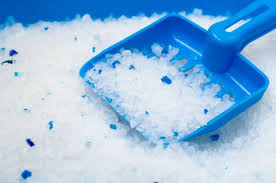 1. Silica litter Crystal cat litter has a unique structure to its atoms, it is composed of silica dioxide sand, oxygen and water. The gel is made up of tiny pores that absorb 40 times their weight in liquid. This unique composition helps the silicon bind with a high amount of liquid and neutralise any odours. Unlike some other types of litter, this one doesn't clump so you'll need to change out the whole pan of litter on a regular basis to prevent odors from forming. With regular changing, stirring and removal of solid waste, crystal cat litter should keep your cat's litter box odor-free. The blue crystals also can contain a product that is carcinogenic to you and your cat. The Pros of Crystal Cat Litter
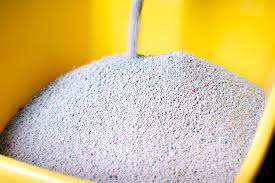 2. Clay Litter Clay litter is composed of absorbent, diverse clay minerals called "fuller's earth." Fuller's earth is any non-plastic clay or clay material that can be used to filter, decolorize and absorb liquids and spills. It has been popular for decades and has the innate ability to absorb its own weight in water. Pros of clay litter:
CLUMPING (or SCOOPABLE) CAT LITTER Clumping litter is also a clay-based litter, but the main ingredient, sodium bentotite, acts as a clumping agent, absorbing urine and turning it into tight, solid clumps that can be easily removed from the litter box and disposed of. Pros of clumping litter:
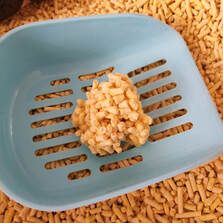 3. Biodegradable cat litter The most common types of natural litter are corn, wheat, pine, walnut, and paper. There’s a lot of variation between the different types – and between different brands of the same type – in terms of cost and performance. Here i talk about the variety we have come across in our travels around Barcelona CORN CAT LITTER Corn cat litter is all-natural and the whole kernel substrate offers clumping and odor control. The large surface area of the kernel traps and absorbs ammonia and urine odors naturally. 'ConsumerSearch' names this brand the best biodegradable cat litter on account of its strong reviews, both from experts and from cat owners at Amazon.com and PetSmart Pros of corn litter:
3 things to consider about the Cat Scoop
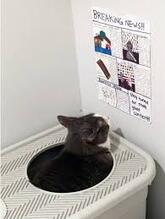 3 Summaries
References
https://en.wikipedia.org/wiki/Ed_Lowe_(businessman) https://flohawks.com/do-not-flush-cat-poop-down-your-toilet/ https://www.cell.com/trends/parasitology/fulltext/S1471-4922(13)00090-1 https://animals.mom.me/how-to-use-crystal-cat-litter-12148779.html www.vetinfo.com/pros-cons-crystal-cat-litter.html https://www.moneycrashers.com/best-natural-cat-litter-reviews/ https://www.consumersearch.com/cat-litter/best-biodegradable-cat-litter https://www.aspca.org/ 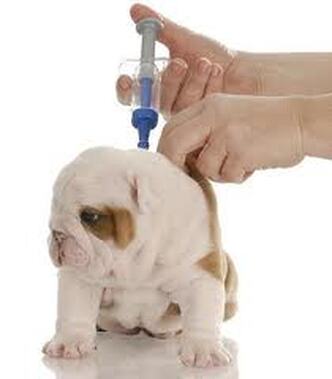 Vaccination of dogs and cats protects them from infections that may be lethal or cause serious disease. Vaccination is a safe and efficacious practice that in many countries has had major impact on improving the quality of life of small companion animals. The success of small animal vaccination programmes over the past five decades mirrors the success of vaccination in controlling disease in the human population. But is it necessary to vaccinate your pet annually after the initial required puppy/kitten vaccinations? What are vaccines? A vaccine is a biological preparation that improves immunity to a particular disease. A vaccine typically contains an agent that resembles a disease-causing microorganism, its toxins or one of its surface proteins. The agent stimulates the body's immune system to recognize the agent as foreign, destroy it, and "remember" it, so that the immune system can more easily recognize and destroy any of these microorganisms that it may encounter in the future. Vaccines have been classified into Core Vaccine and Non-Core vaccines. What is a core vaccine? According to the World Small Animal Veterinary Association (WSAVA) and their Vaccine Guidlines group (VGG) "core vaccines are those which ALL dogs and cats, regardless of circumstances or geographical location, should receive. Core vaccines protect animals from severe, life-threatening diseases that have global distribution". Core vaccines for dogs are:
What is a non-core vaccine? The VGG has defined non-core vaccines "as those that are required by only those animals whose geographical location, local environment or lifestyle places them at risk of contracting specific infections, for example leptospirosis or Lyme disease. Duration of Immunity (DOI) After vaccination an animal will develop an immunity to the disease, but, for how long will the animal have this immunity? According to the VGG "Most companion animal core vaccines, until relatively recently, had a 1-year minimum DOI and carried a recommendation for annual revaccination. In more recent years many of the same products have been licensed with a minimum DOI of 3 (or sometimes 4) years. Above all, it must be remembered that even a 3-year license is a minimum DOI for core vaccines and for most core vaccines the true DOI is likely to be considerably longer, if not lifelong, for the majority of vaccine recipients". Is there a way to find out if your pet still has immunity? According to the VGG "Serological Testing to Determine the Duration of Immunity (DOI) Antibody tests can be used to demonstrate the DOI after vaccination with core vaccines. It is known that a large majority of companion animals maintain protective antibody against many of the core diseases for many years and numerous experimental studies support this observation (Bohm et al. 2004, Mouzin et al. 2004, Schultz 2006, Mitchell et al. 2012). Therefore, when the antibody is absent, the companion animal should be revaccinated unless there is a medical reason for not so doing, even though some will be protected by immunological memory. The VGG recognizes that at present such serological testing might be relatively expensive. However, the principles of ‘evidencebased veterinary medicine’ suggest that testing for antibody status (for either puppies or adult dogs) should be better practice than simply administering a vaccine booster on the basis that this would be ‘safe and cost less’. Note: the non-core vaccines have a lesser efficacy of keeping immunity. What are the disadvantages of over-vaccination?
1. the dog is genetically defective 2. there is something wrong with the dog's diet 3. the dog is unhealthy when vaccinated 4. the dog is stressed at the time of injection 5. the dog's immune system is incompetent 6. the dog is exposed to a virus before or immediately after vaccination 7. the dog is taking immune suppressant drugs such as steroids 8. the vet administers the vaccine inappropriately 9. the dog is incubating disease at the time of vaccination Interesting Fact Parvovirus was created by vaccines! This disease didn't exist prior to the 1970s. In fact, scientists tell us it was created by vaccine manufacturers who cultured the distemper vaccine on cat kidneys that were infected with feline enteritis. This cat-enteritis-diseased distemper vaccine was then injected into dogs around the world, and parvovirus reared its ugly head around the world at the same time. A naturally occurring epidemic would spread slowly across continents. Parvovirus appeared with a big bang, in line with multi-national vaccine company distribution policies. Conclusion
Research, especially from the USA and the World Small Animal Veterinary Association (WSAVA) points to vaccines lasting, at least, seven years and sometimes life. References www.akc.org Stan Rawlings:https://www.doglistener.co.uk/depth-annual-dog-vaccination-dangers Dr Shultz: https://www.wsava.org/Committees/Committees/Vaccination-Guidelines-Group www.wsava.org/WSAVA/media/Documents/Guidelines/WSAVA-Owner-Breeder-Guidelines-2015_1.pdf www.wsava.org
So why are rabbits so ingrained in the traditions of Easter Sunday? And what do they have to do with the resurrection of Jesus? Actually, nothing. Bunnies, eggs, and fluffy yellow chicks all stem from pagan roots. They were incorporated into the celebration of Easter separately from the Christian tradition of honoring the day Jesus Christ rose from the dead. Rabbits are used as symbols of fertility, sexuality and Spring. Rabbit as symbols of Fertility, Virginity and Sexuality Rabbits and hares have been associated with Mary, mother of Jesus, for centuries. Their association with virgin birth comes from the fact that hares – often confused mistakenly with rabbits – are able to produce a second litter of offspring while still pregnant with the first.
Rabbits as symbols of Spring and Fertility Some folklorists have suggested that the Easter Bunny derives from an ancient Anglo-Saxon myth, concerning the fertility goddess Ostara. The Encyclopedia Mythica explains that: ''Ostara is the personification of the rising sun. In that capacity she is associated with the spring and is considered a fertility goddess. She is the friend of all children and to amuse them she changed her pet bird into a rabbit. This rabbit brought forth brightly coloured eggs, which the Greek goddess gave to children as gifts. From her name and rites the festival of Easter is derived.'' The myth of Ostara, then, has become a popular (but unproven) theory for the derivation of the Easter Bunny. Later when Roman Catholicism became the dominant religion in Germany in the 15th century myths of painted eggs and rabbits may have merged with already ingrained pagan beliefs. In the 18th century, German immigrants took the custom of the Easter Bunny with them to the United States when they settled in Pennsylvania Dutch country, according to the University of Florida's Center for Children. Over the decades the folklore has grown, spread and innovated into a bunny laying eggs tradition over Easter. In conclusion, to me at least, it is not very clear how rabbits became part of the Easter tradition; maybe through an association to the fertility of Mary, the mother of Jesus, maybe through the pagan tradition of revering the goddess of Ostara, but, it is important to remember that in these legends rabbits are depicted as symbols. Symbols of fertility, virginity and Spring. A symbol is very different to a living and breathing animal. Caring for a rabbit is a responsibility that needs to be taken seriously. Rabbits eat requiring fresh greens and hay. Rabbits are very cute, but, they poop. Rabbits are territorial and can bite. Rabbits chew cables. And most of all rabbits may need to go to the doctor occasionally. On the other hand Rabbits make wonderful pets. Buy responsibly.
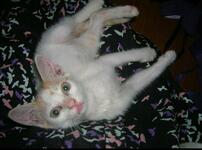 This Is a Story About Frank, found and adopted by his humans in Vietnam. Written by Amy Grant 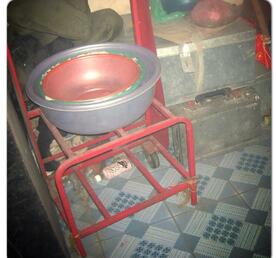 “My friend’s band was playing at a Heavy Metal bar in Hanoi and when I went to the bathroom they had this tiny wee thing tied up by a piece of string to a red stool miaowing like crazy. His poor neck was red raw from struggling against the string, so I asked them if I could have him. They didn’t seem to be that bothered and told me to come back the next morning. 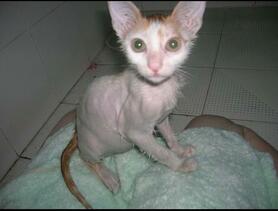 It seemed an age to wait, but first thing the next morning I went on the back of a motorbike taxi and they put him into an old box for me. He hated coming back to our flat in that box on the back of that motorbike. Yowling all the way. They said he was 2 months old but they weren’t sure. He was incredibly skinny – you could feel all his ribcage - and covered in fleas. We gave him two baths in flea shampoo and he seemed almost relieved when I sat and picked off the fleas one by one. He was soooper hungry all the time and grew incredibly fast in just a few weeks. There weren’t any good pet sitting services in Hanoi so when we went on holiday we would take him to friends’ houses which he wasn’t a fan of, except, the one with a big fish tank for him to watch. Before we came to Spain we had to go to about 10 vet appointments and send a sample of his blood to an EU lab to be tested and approved, which cost the earth, but was worth every penny because there was no way I was going to leave him behind. Now (in Barcelona) he doesn’t have to go and stay with friends and he is much happier. He is also more confident because we have more friends over to our flat here. He is a big fan of Barcelona and having more than 3 flavours of cat food to try. In Hanoi we could only find 3 flavours! 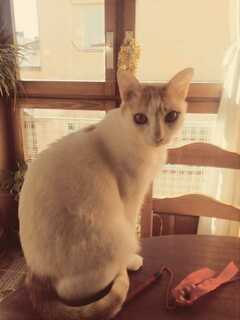 Frank is living in Barcelona at the moment, being cared for by Fidos Playground when his humans take time off. He is full of personality, plays hide and seek, drinks water out of tot glasses and talks with little purr mumbles. He loves to hide from new carers and watches with glee, from high vantage points, as they try to locate him not realising that all along he is above them! Adopt, Dont Shop.I will be posting stories of our adopted pets that we care for over the year of 2019. Each story is inspiring, each pet a precious gift highlighting and each personality quite unique.
According to Peta.org and Change.org more than 6,000,000 pets end up in USA shelters each year. It is mentioned that half of these will not come out alive. This figure is staggering. And it is only a statistic for USA. What about the rest of the world? Please think twice when looking for a pet. The world of abandoned pets is full of little treasures. I hope these stories inspire you. Dora our beloved sausage shaped adopted dog was adored and kissed on her forehead every time I saw her. She died at home with her own family. She died in the best possible way, in her favorite room and at the side of her human. When i was informed of her heart disease i went to see her at the vet. Her beautiful family shared this moment with me. She walked out from the vet rooms and greeted each one of us individually moving from one person to the next sharing a greeting with each one of us. That was the last time I saw Dora. 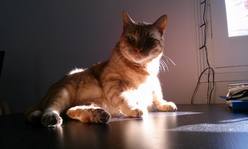 “I love cats because I enjoy my home; and little by little, they become its visible soul.” - Jean Cocteau (director, Orpheus) JC was a ginger bomb. A boy cat. No frills on him. When we first met each other he was young and cheeky. He used to sit on the roof of the terrace and tease me as i fretted below him. During his last days I was visiting him as his family were away on holiday. His routine would be to crawl out from under the duvet and saunter out of the bedroom and 'miouw' a contented happy greeting to me. He would roll on the floor and then walk off into the sitting room where our cuddles would take place. On the last day i entered his flat and he didn't come to greet me. There was no miow of greeting or furry roll on the floor. JC had passed away during the night from Sudden Death Syndrome. I wrapped him in a blanket and preyed and cried to the empty space around me. I thanked him for his special place in my life and for enriching it with cheekiness and laughter. Grief. Death and grief are certainties in life. Grief is the response to loss. Loss could be the loss of a limb, loss of a dream, a family member or a beloved pet. When a cherished pet dies, the experience of grief and bereavement are no different than mourning the death of a person we have loved. Pet loss is real, significant, and heart wrenching. The feelings of sadness, loneliness, guilt, or anger don't discriminate because the deceased was a pet. Our society's customs around human loss are well established - we have funerals, religious ceremonies, and we are encouraged to share our stories and memories of the deceased. In Judaism for instance, the bereaved formally mourn for seven days of shiva, during which, the bereaved are surrounded by, and lifted up by their community. Similarly, in Hinduism, the mourning period is over 13 days. I think we have all heard of Irish wakes. Ignoring grief, tears at the fabric of being human and disallows one of the most crucial experiences that must occur in the wake of our loss. Yet there are no such established norms for pet loss. Here are some points to help understand a bit more about grief: To feel the pain of grief when the bonds with our pets are broken. The bonds we have with our companion animals are deep and strong and when those bonds are broken our grief is real and worthy of attention. To feel shocked and overwhelmed by the intensity of our grief. Since our animals’ life spans are so much shorter than our own, it is inevitable that eventually we will experience the loss of our beloved animal companions. The grief we feel at such times can be far more intense than we ever expected, no different from that of losing another special family member or cherished friend. To understand our grief reactions, feelings and behaviors as normal. Grief is a natural, spontaneous response to the loss of a significant relationship. Truly acknowledge that you are, in fact, grieving. This is usually very difficult to come to terms with because allowing yourself to grieve demands that you be vulnerable — not just with others, but with yourself. You must be willing to look yourself in the mirror and resist the temptation to bury the pain that resides within you. Physchological research (1) has shown that those who repress their grief are more likely to succumb to depression, sleep disorders, and other adverse effects in the aftermath of grief than those who don’t. As scary as it can be to allow yourself to experience grief, the reality is that it can actually prevent complications down the line. Don’t hesitate to seek out support from a licensed therapist or a support group or find help from a friend who will listen without judgement. A friend who can empathise and who is not afraid to broach or share the pain, someone with whom we can openly acknowledge our feelings, express and work through our feelings, and come to terms with our loss. To have our grief recognized by others as significant and legitimate. Since grieving over animals isn’t generally accepted in our society, we may feel uneasy or embarrassed, as if we have no right to feel or express our grief because our loss is not significant enough. But we’re not grieving “just an animal.” Since we’re the only ones who know how much our animals meant to us, when they’re gone we’re the only ones who can measure how very much we’ve lost. All grief is painful but disenfranchised grief – grief that is dismissed by others – is more painful still. Honor the memory of our pets in whatever way we see fit. To memorialize our beloved companion animals is to honor and acknowledge the important role they played in our lives, to bring comfort to ourselves and to help us keep their love and presence in our hearts. Among other things, we can memorialize our pets by writing about them, making an album or a scrapbook, planting a living memorial in our garden, having a meaningful memorial service, funeral or ritual, or making a donation to a charitable animal organization in our pet’s name. My information for the above blog was taken from the following sites:
(1)https://www.ncbi.nlm.nih.gov/pmc/articles/PMC1112778/ (2)https://www.griefhealingblog.com/2012/10/a-bill-of-rights-for-grieving-animal.html (3)https://www.upworthy.com/4-steps-to-dealing-with-loss-plus-why-you-need-to-grieve-before-you-can-move-on (4)https://www.huffingtonpost.ca/sandy-kiaizadeh/pet-bereavement_b_10918534.html (5)https://www.psychologytoday.com/us/blog/animal-attachment/201702/four-steps-take-after-experiencing-pet-loss (6)https://www.bluecross.org.uk  What is Cannabidiol? Cannabidiol or CBD, is one of over 60+ naturally occurring cannabinoid compounds found in Cannabis, an annual herbacous plant. CBD oil is derived from an organic substance formed in the plant's secretions. Both marijuana and hemp are forms of cannabis, but it is important to note that cannabis does not mean marijuana. Cannabis is the genus name and general umbrella term, under which all forms of marijuana and hemp fall. Of the 60+ cannabinoids, there are two that are well known:
What does CBD have to do with our pets? For sometime now it has been known that the mammalian body, also naturally produces cannabinoids known as endocannabinoids. The mammalian body has an endocannabinoid system made up of receptors which are located throughout the body and that sends and receives signals through the brain, nervous system, internal organs and cardiovascular system. This system is primarily responsible for regulating and supporting many central nervous system functions, which, in turn supports the immune system. The Endocannabinoid system has four primary purposes:
Research into the cannabinoid, CBD, started as early as 1940. There is literature that states a poet gave it to his son for epilepsy treatment in the 15th century. It was not until 1963 that it was properly identified, and, only in the 1990's and 2000's that research was taken further. Two Tales of CBD and its positive affects
Both Pao and China have responded positively to CBD. China has regained a childlike energy and is back to her normal activities. Pao licks his paws significantly less due to the pain of his neck hernia. Will CBD give your pets a high? THC is the cannabinoid known to interact directly with the two classical cannabinoid receptors that are found in the mammalian body (CB1 and CB2), causing the well known high. CBD, on the other hand, does not interact with these receptors. Instead, CBD inhibits the enzymes that break down endocannabinoids, leading to an increase in your body’s naturally-produced cannabinoids What is the legal status for CBD in Spain in 2018? CBD is legal in Spain since it is not psychotropic. On the other hand, THC remains illegal. CBD is legal in many other European countries such as Germany, France, Netherlands, and UK, because it does not contain or contains less than 0.2% of the physcoactive component THC. What are the medicinal benefits of plant based CBD? CBD can benefit pets for many of the same conditions as humans:
How to choose CBD for your pet? It is important to know that CBD has no toxicity and your pets cannot overdose on it. The benefits of daily use increase as CBD builds up slowly in the body. Choosing the right CBD is critical. You need to get a high quality CBD product to get all the benefits. Usually the fewer ingredients the purer the CBD you are getting. The best CBD oils:
Always consult a veterinarian for professional advice and before changing any medications that your animal maybe taking. Plants Not Pills (https://www.plantsnotpillscbd.com/who-we-are) This is the product that has recently come to my attention through the two dogs, Pao and China above. Please browse their website. They fulfill all the necessary requirements for a high quality CBD product. Contact details for any questions or research you may like to do. Vet Clinic: Clinica Veterinaria Volpevets, 931189789, Vet called Nacho, Barcelona Visits a domicilio 650 85 56 62 Website: www.plantsnotpillscbd.com Contact person for PlantsnotPills: Lili @ 63823 92 64 Utube: https://www.youtube.com/watch?v=trQh2E7CHtg&feature=youtu.be References Plantsnotpills Dogs Naturally Magazine The Guardian Bluebirdbotanicals cen.acs.org 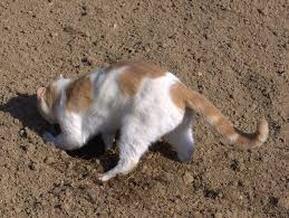 3 Interesting Facts about Cat Litter: 1. Businessman and entrepreneur Ed Lowe invented and trademarked Kitty Litter® in 1948 as the first commercially marketed cat litter. In that time the most popular litter pan materials were sand and fireplace ashes. 2. Cat waste can contain a nasty parasite called Toxoplasma which can cause some serious health problems to humans. Wastewater treatment systems are primarily designed to handle human waste and aren’t designed to handle things like Toxoplasma. Unfortunately, wastewater treatment systems don’t remove this parasite from the water before it is discharged back into the environment. The harm can also extend into waterways and marine ecosystems affecting fish, shellfish, otters, and other marine life 3. To avoid being eaten or attacked by predators, ancestral cats had to cover up their tracks. The smarter cats gravitated toward soft dirt or sand, since their granular consistency made it easier to bury their waste. This is why cats are naturally attracted to the feel of cat litter and know what to do once they feel it beneath their paws. 3 Recommended Qualities for cat litter?
3 of the main cat litters we have experienced - Pros & Cons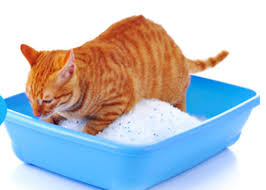 Crystal Cat litter Crystal Cat litter is made up of Silica gel which is composed of silica dioxide sand, oxygen and water. The gel is made up of tiny pores that absorb 40 times their weight in liquid. Most of us recognize silica gel as those little “dessicant—do not eat” packets that come with medications, cameras, shoes and other items that could be damaged by moisture buildup. Pros
 Biodegradable Litters In the US it is considered that there are nearly 75 million cats and up to 150,000 tons of cat litter that end up in landfills every year. For this reason alone it may be worth considering biodegradable cat litter as an option for your cat. Biodegradable litters come in different forms: wheat, corn, walnut and paper. The ones most often seen through our Barcelona pet sitting experience are the clumping and non clumping corn varieties. Pros
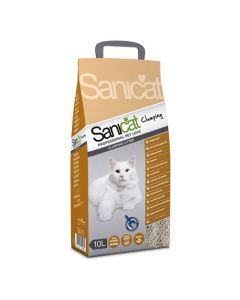 Clay litter Clay litter is composed of absorbent, diverse clay minerals called "fuller's earth." Fuller's earth is any non-plastic clay or clay material that can be used to filter, decolorize and absorb liquids and spills. It has been popular for decades and has the innate ability to absorb its own weight in water. Pros: It will effectively absorb moisture as well as provide some odor control through absorption.
Clumping litter is also a clay-based litter, but the main ingredient, sodium bentonite, acts as a clumping agent, absorbing urine and turning it into tight, solid clumps that can be easily removed from the litter box and disposed of. Pros:
3 things to help you to choose a scoop As pet sitters, scooping litter efficiently is all about the right scoop!
Conclusion
References
www.petsit.com/pick-of-the-litter https://www.huffpost.com/entry/ www.vetinfo.com/pros-cons-crystal-cat-litter.html www.moneycrashers.com/best-natural-cat-litter-reviews/ https://www.consumersearch.com/cat-litter/best-biodegradable-cat-litter https://flohawks.com/do-not-flush-cat-poop-down-your-toilet/ https://www.litter-robot.com/blog/2015/06/30/why-do-cats-use-litter-boxes/ The Gos d'Atura, Perro de Pastor Catalan or Catalan Sheepdog are an ancient and rare breed of herding dog that developed in Catalonia, during the establishment of the Roman Empire. The breed was officially recognised in Catalonia in 1929, but, is also bred in Germany, Finland and Sweden. Catalan Sheepdogs are high spirited and cheerful; are well known for being able to do the 'doggy dance'; are highly intelligent, often used by the police and security agents; an agile breed that excels in dog sports and extremely loyal to their human owners. What do they look like? They sporting full beards and mustaches that give them a funny look. They have an intense intelligent and alert expression with expressive deep amber coloured button shaped eyes and long straight hair. They can be brown, black or cream in colour. 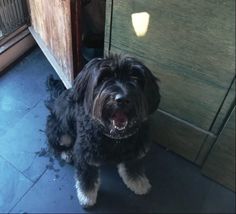 History & Development The Catalan Sheepdog developed during the time when the Roman Empire began to flourish between 200 and 100 BC. The livestock guard dogs, that the Romans brought with them were crossed with the local Catalan dogs, thus developing the first line of the Catalan Sheepdog breed. When the Roman conquerors arrived in the Iberian Peninsula around 200 to 100 B.C. they brought with them two types of dogs. One breed was used to defend and protect the Roman quarters, to tend their flocks of sheep as well as to help in attacking the enemies. The other breed, a dog with a lighter build was used to herd cattle. These dogs that are thought to be the ancestors of the Italian Bergamasco were mated with the native Catalan dogs to give the Catalan Sheepdog of today. Gradually, these dogs spread all across Europe and became particularly popular in the Catalonia region. During the civil war in Spain, the dogs were often used to carry messages between command centres. They were also used as guard dogs. Driving and tending the flock is the true calling of a Catalan Sheepdog. These dogs have a natural instinct of caring for the flock. A Catalan Sheepdog would amiably perform the commands of the shepherd but in most instances the dog will act on its own, making its own decisions concerning the monitoring of the flock. This hardworking breed has been the able and irreplaceable supporter of shepherds for hundreds of years, vigilant and courageous and well able to protect the flock entrusted to its care. After the 2nd World War, the dog’s population dramatically declined. Some specimens were destroyed, others were rarely bred. Demographic movement is considered to be the major cause of population decline. During the 1950s and 1960s, a lot of farms were closed when people from the countryside moved into towns. Demand for the breed dwindled, the dogs fell into disuse. In 1970 a group of breeders worked together to regenerate the breed. Remaining specimens were found and bought from the shepherds and intensive breeding was begun. Today the breed is still considered to be rare but thanks to the dedicated breeders, the population is slowly but surely growing. 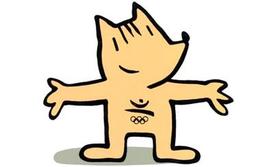 Catalan Sheepdog Personalities Cobi, the Catalan Sheepdog, was the official mascot of the 1992 Barcelona Olympics. Coby represents a Catalan Sheepdog in Cubist style inspired by the interpretations from Picasso of a masterpiece from Velazquez, Las Meninas. Cobi was designed by Javier Mariscal and he was unveiled to the public in 1987. His name was derived from the Barcelona Olympic Organising Committee (COOB). Before and during the Games, Cobi was shown in a variety of advertisements for Olympic sponsors such as Coca-Cola, Brother Industries and Danone. He even had his own anime television series, The Cobi Troupe. He also appeared on an extensive range of souvenirs, dubbed Cobiana. During the Games an inflatable Cobi was tethered to the Barcelona waterfront. Other famous Catalan Sheepdog personalities Einstein and Copernicus from the movie 'Back to the Future' are Catalan Sheepdogs. 'Back to the Future' tells the story of Marty McFly and the scientist Dr. Emmett Brown, or commonly referred to as “Doc” and how they travel back in time to alter their history and return in 1985. Einstein (also called Einie) and Copernicus were the Doc’s pet Catalan Sheepdogs. However, it was Einstein who had a bigger role to play in the film. Hello Everyone. My name is Noa
Please, during the fiesta of Sant Joan, Don't buy fireworks. The noise that they make, frightens me so much. Thank you Hear like your Pet Our pets hear a different range of noises than we do, for example dogs can hear a wider range of frequencies, and, cats can hear a higher pitch. Dogs and cats can also rotate their ears, allowing them to receive stereo sounds. Combine these attributes with other, higher functioning senses that your pet may possess and we can start to understand why out animals are most affected by the whizzing, fizzing, exploding, popping noise of fireworks. Living creatures (including us) are naturally wired to react to sudden and loud noises. Their senses are attuned for survival. So what can we do during the holiday of Sant Joan, to help other animals who feel the same as Noa?
|
Sign up for our newsletter
Archives
June 2020
Categories |

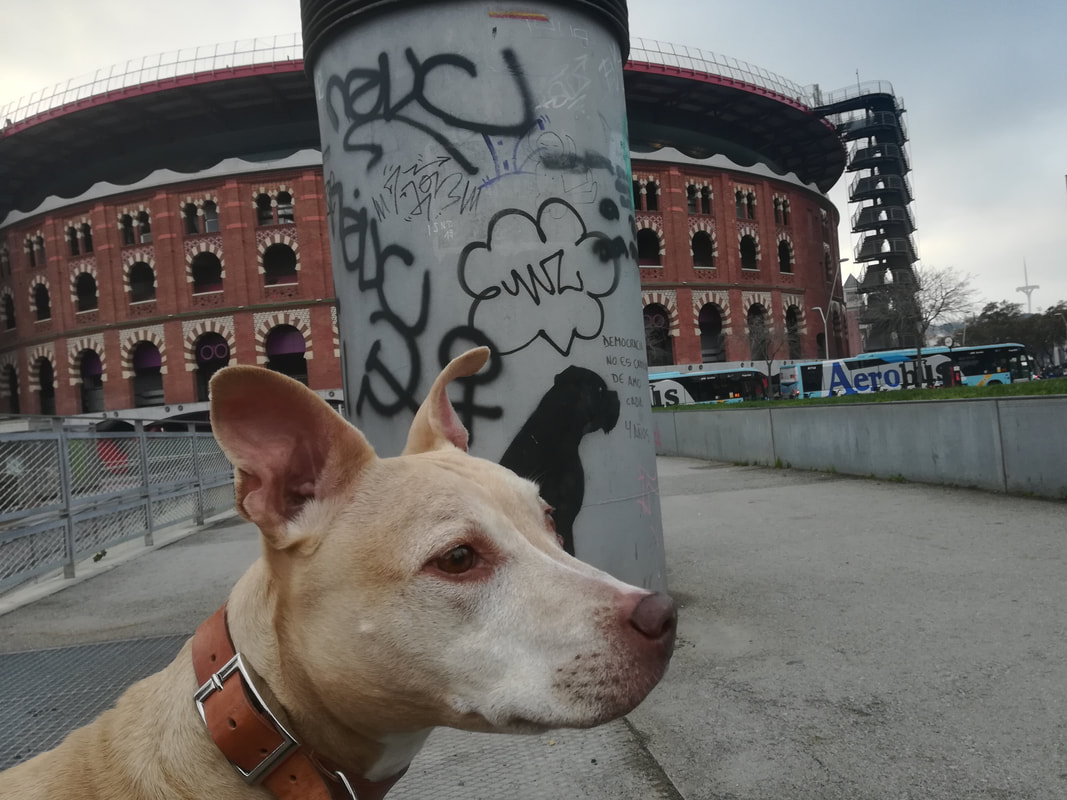
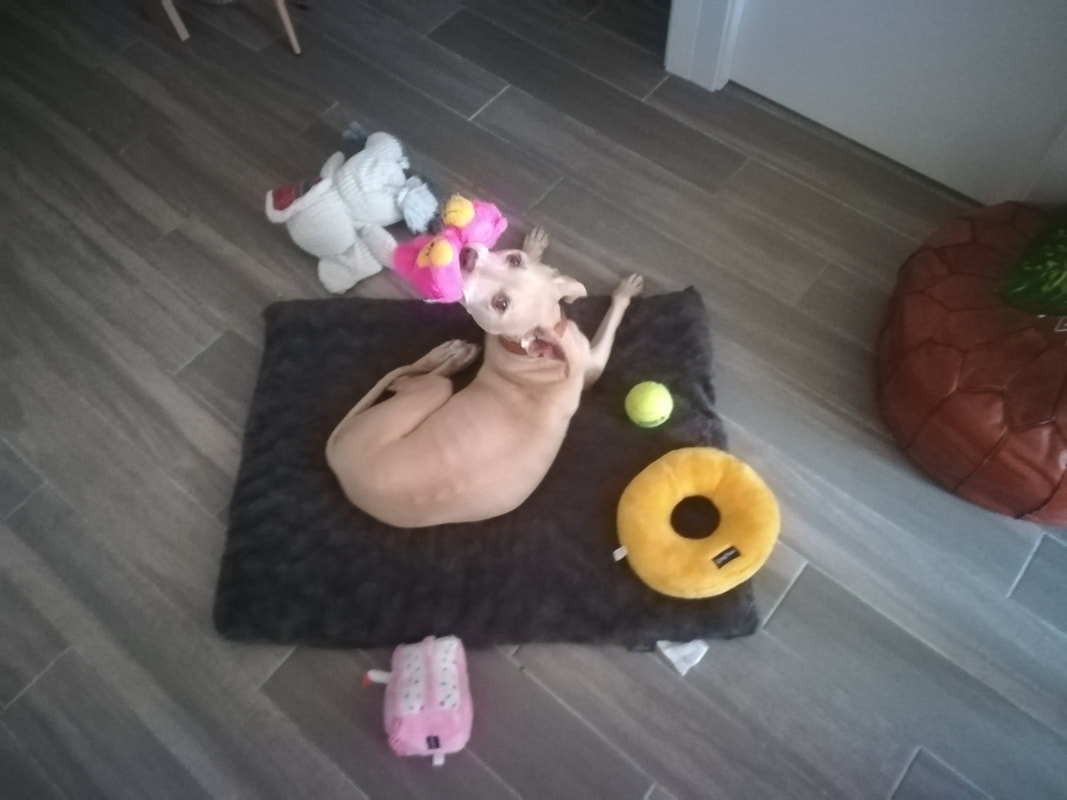

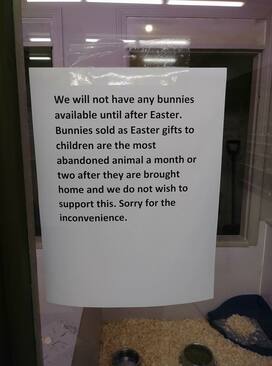
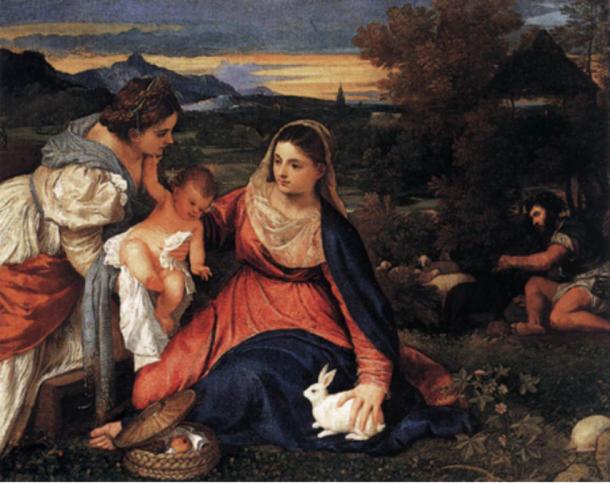
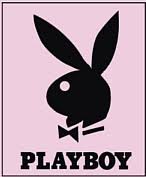

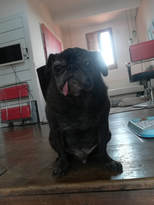
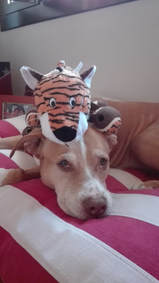
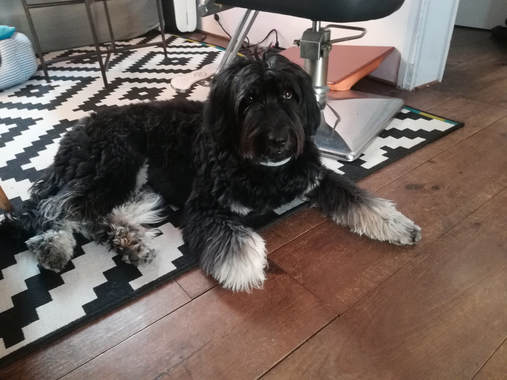
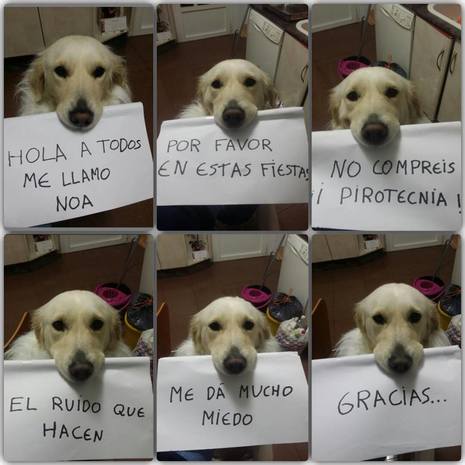
 RSS Feed
RSS Feed